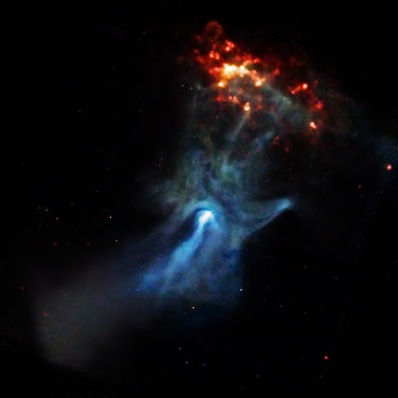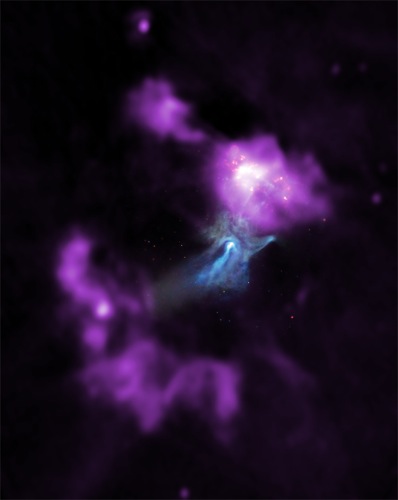|

Top Stories

|

|
 |
 |



Orion Nebula binary star resolved by VLTI
... astronomers have plunged into the heart of the Orion Trapezium Cluster to produce the sharpest image ever obtained of the young double star Theta 1 Ori C...
read more

Hubble finds hidden exoplanet in archival data
...A powerful image processing technique may allow astronomers to seek out exoplanets that could be lurking in over a decade's worth of Hubble Space Telescope data...
read more

100 hours of astronomy
...Another great Cornerstone Project of the International Year of Astronomy kicks off this week with 100 hours of astronomy - the largest single science public outreach event ever organised...
read more |
 |
 |

|
Spaceflight Now +

|

|
 |
 |

Subscribe to Spaceflight Now Plus for access to our extensive video collections!
 How do I sign up? How do I sign up?
 Video archive Video archive

STS-120 day 2 highlights

Flight Day 2 of Discovery's mission focused on heat shield inspections. This movie shows the day's highlights.

 Play Play

STS-120 day 1 highlights

The highlights from shuttle Discovery's launch day are packaged into this movie.

 Play Play

STS-118: Highlights

The STS-118 crew, including Barbara Morgan, narrates its mission highlights film and answers questions in this post-flight presentation.

 Full presentation Full presentation
 Mission film Mission film

STS-120: Rollout to pad

Space shuttle Discovery rolls out of the Vehicle Assembly Building and travels to launch pad 39A for its STS-120 mission.

 Play Play

Dawn leaves Earth

NASA's Dawn space probe launches aboard a Delta 2-Heavy rocket from Cape Canaveral to explore two worlds in the asteroid belt.

 Full coverage Full coverage

Dawn: Launch preview

These briefings preview the launch and science objectives of NASA's Dawn asteroid orbiter.

 Launch | Science Launch | Science

 Become a subscriber Become a subscriber
 More video More video

|
 |
 |

|
|
 |

Young pulsar hands out radiation
BY DR EMILY BALDWIN
ASTRONOMY NOW
Posted: 06 April, 2009
A very young and powerful pulsar, less than 20 kilometres wide, has carved out a beautiful X-ray nebula in the shape of a hand that reaches out across a distance of 150 light years.

The cosmic hand of PSR B1509. The lowest energy X-rays that Chandra detects are red, the medium range is green, and the most energetic are blue. Image: NASA/CXC/SAO /P.Slane, et al.
The new image was taken by NASA’s Chandra X-ray Observatory, and reveals a spritely 1,700 year old pulsar - PSR B1509-58 - located 17,000 light years away. The pulsar is a rapidly spinning neutron star created when a massive star ran out of fuel and collapsed into a dense core. It spins at a dizzying rate of seven revolutions per second, and is flinging energy out into its neighbourhood that is carving complex structures, including one that resembles a large hand.
B1509 is thought to have an intense magnetic field at its surface, some 15 trillion times stronger than the Earth’s magnetic field. Combined with the pulsar’s rapid rotation, this makes B1509 one of the most powerful electromagnetic engines in the Galaxy. This celestial powerhouse produces a powerful stream of electrons and ions that rush away from the neutron star. As the electrons pass through the magnetized nebula, they radiate away their energy to create the elaborate nebula detected by Chandra.

This image combines X-ray and radio measurments. Image: NASA/CXC/SAO/P.Slane, et al.
In the palm of the nebula, a faint circle marks the spot at which the electromagnetic wind is rapidly decelerated by the slowly
expanding nebula. Finger-like structures extend out from the palm, touching the nearby gas cloud RCW 89 and lighting them up to glow brightly in X-rays.
The pattern of temperature recorded in this region, which appears to vary in a circular pattern around the ring of emission, suggests that the pulsar may be precessing like a spinning top and sweeping an energising beam around the gas cloud. |
 |
 |
 |
|
|



